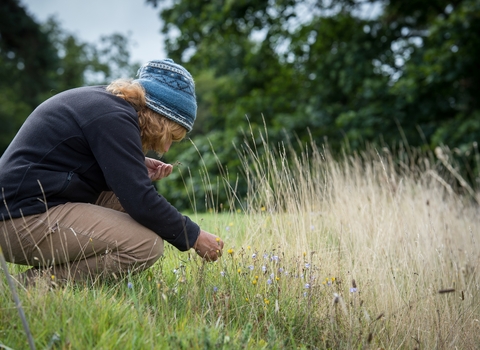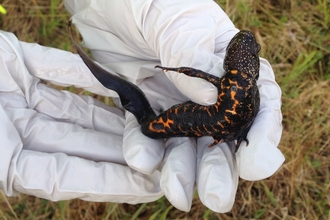Ecological surveys of different types are required for all sizes of projects: from extensions or conversions for private homeowners, to housing developments and large infrastructure projects. Enfys Ecology can undertake or prepare any of the work noted below:
Preliminary Ecological Appraisal (PEA)
This is the usual starting point of the ecological appraisals of new sites, whether commercial, private or public.
A surveyor visits the site and classifies and maps the habitats present using a standardised system, and notes other points of interest or concern. Each habitat is then assessed to understand if it holds significant value for protected or notable species, and a desk-based review of any known species records is undertaken. Further surveys may be required as a result.
Ecological Impact Assessment (EcIA)
EcIA is a process of identifying, quantifying and evaluating potential effects of development on habitats, species and ecosystems. The findings of an assessment can help authorities understand ecological issues when determining applications for consent. Unlike EIA, EcIA on its own is not a statutory requirement: instead, it is an evaluation process undertaken to support a range of assessments.
Green Infrastructure Statements
As per Planning Policy Wales 2024, all planning applications must include a green infrastructure (GI) statement. GI has been defined as “the network of natural and semi-natural features, green spaces, rivers and lakes that intersperse and connect places”. GI can function at a range of different scales: from entire ecosystems such as wetlands and rivers to parks, fields and gardens at the local scale and street trees, hedgerows, roadside verges and green roofs/walls at the micro scale.
Biodiversity Statement
Some local authorities request a ‘biodiversity statement’ which details how any development will set out to deliver biodiversity benefits, whether in advance of, alongside or after works have taken place.
Supporting discharging planning conditions
When a planning application has been submitted, a Council may require extra ecological information to enable the discharge of planning conditions and allow the project to commence. These often comprise documentation providing detailed information regarding methods to be followed, such as a Reasonable Avoidance Measures Scheme or Biosecurity Risk Assessments.
BREEAM assessments
- BREEAM is an environmental assessment method to demonstrate sustainability within infrastructure and building. Enfys ecology can assist clients under the Land Use and Ecology Category, with a Suitably Qualified Ecologist to determine what credits the client is able to achieve. It is vital that ecology is taken into consideration at the start of the scheme so the ecologist can provide advice to maximise the credits available.
Net benefit for biodiversity
In line with Planning Policy Wales, and following the Environment Wales Act 2016 (Section 6) and guidance provided in the recent letter by the Chief Planner in Wales, there is a requirement to ensure that a net benefit for biodiversity is provided in all applications for planning in Wales. We offer advice on and deliver enhancements which can be implemented to ensure that such benefits are delivered.
Biodiversity Benchmark
Biodiversity Benchmark is the only standard that certifies the management of your business site for wildlife. Businesses’ which own land can help nature’s recovery, and the Wildlife Trust’s standard allows these businesses to be recognised and celebrate the work being carried out for Wildlife. Enfys ecology can carry out surveys and provide advice and support to allow your business to become accredited as a Biodiversity Benchmark site.
Building with Nature
Building with Nature is the UK’s first green infrastructure benchmark. They have created Standards to be followed to produce high quality green infrastructure at the heart of the development. Enfys ecology have a trained Assessor in house who is able to help get your scheme Building with Nature accredited.
Arboricultural surveys
Arboricultural surveys are carried out to ensure that trees are taken into consideration during the planning process, the survey will look at the condition, species, age, health and the root protection area of trees on or adjacent to the site, and if any of the trees have Tree Protection Orders on. For planning applications the survey usually required is the BS5837 Tree Survey Report.
Ecological Clerk of Works
Following on from surveys and planning permission being granted, where required, often an Ecological Clerk of Works (ECoW) is required on site, to supervise works and ensure all works are carried out as detailed in the reports, and follow environmental legislation and best practice. They will also advise on the mitigation measures and ensure these are complied with.
Specific species surveys
A wide range of individual species or groups of species are specifically protected under UK legislation. Their presence needs to be taken into consideration when undertaking any development work, with appropriate conservation/mitigation measure put in place if required. Enfys Ecology can undertake a wide variety of work relating to, the most common surveys being listed below:
Bats
Bats live in a variety of habitats, and may use different roosts depending on the time of the year. Surveys required may vary, but could include:
Preliminary roost and tree roost potential assessments
Emergence / dawn re-entry surveys
Static detector monitoring
Activity transects
DNA analysis
If bats are found at the site, and the works will impact them, a licence will be required from Natural Resources Wales to enable any work to be undertaken. All bat surveys follow the latest Bat Conservation Trust Bat Survey Guidelines 2024 and mitigation following the CIEEM Bat mitigation Guidelines 2023.
Birds
All birds, their nests and eggs are protected. A number of different bird surveys may be needed depending on the site, these include;
- Breeding bird surveys
- Wintering and migrant birds
- Specific Schedule 1 bird surveys (e.g barn owl, goshawk)
- Nesting bird surveys – immediately prior to any works being carried out on a site, if taking place during nesting bird season, nesting bird checks must be carried out beforehand to ensure no nesting birds will be disturbed by the works.
Badgers
Badgers and their setts are strictly protected. Our staff can complete a walkover survey to identify any signs of their presence (supported by camera traps and sand traps); assess population levels using techniques such as bait marking; and design and deliver solutions to minimise the impact of any development.
Dormice
Dormice are protected by law in the UK due to their numbers declining in the last 100 years. We can undertake a walkover survey looking for suitable habitat and signs of their presence; install nest and footprint tubes where appropriate; put up and monitor dormouse boxes; and devise mitigation strategies if required. Dormouse surveys and mitigation follow the latest up to date 2025 guidance.
Great crested newts
As the UK’s most strictly protected amphibian, great crested newts and their eggs, breeding sites and resting places are all subject to legislation.
- We can:
Undertake a habitat suitability index assessment (HSI) to assess the likelihood of their presence. - Undertake presence/absence surveys (including eDNA surveys) to monitor populations and provide estimates of their size.
- Create appropriate mitigation, including amphibian fencing, trapping and relocation.
Otters
Otters are now recovering in Britain, after dramatic declines due to pesticide use, hunting and habitat loss severely affected their numbers during the 1950s – 1970s. By the 1970s otters had disappeared from much of Wales and England.
Otters are now found in every county in Wales. We can survey for their presence; create mitigation solutions, where required; and aid in any licensing process.
Water voles
Water voles are fully protected under Schedule 5 of the Wildlife Countryside Act (1981). We can complete walkover surveys to assess habitat suitability and look for any evidence of their presence; help produce a mitigation strategy if we locate an active burrow/watercourse; provide future habitat management advice; and help with any licencing queries and applications.
Reptiles
Populations of lizards and snakes in Britain are declining due to habitat loss, degradation and fragmentation. We can provide site assessments to identify potential reptile habitat, survey for the presence of reptiles, and estimate the size of a population.
Findings from a reptile survey will inform the design of mitigation, compensation and enhancement measures as part of a development scheme. Mitigation could include reasonable avoidance measures to minimise the impact on reptiles, reptile fencing around areas of retained habitat and the relocation of reptiles to a safe receptor site, by an ecologist. Compensation and enhancement for reptiles could include planting of native shrubs or hedgerows, creation of reptile rockeries to provide sheltered basking habitat, or artificial hibernaculum such as piles of logs or brick rubble.



